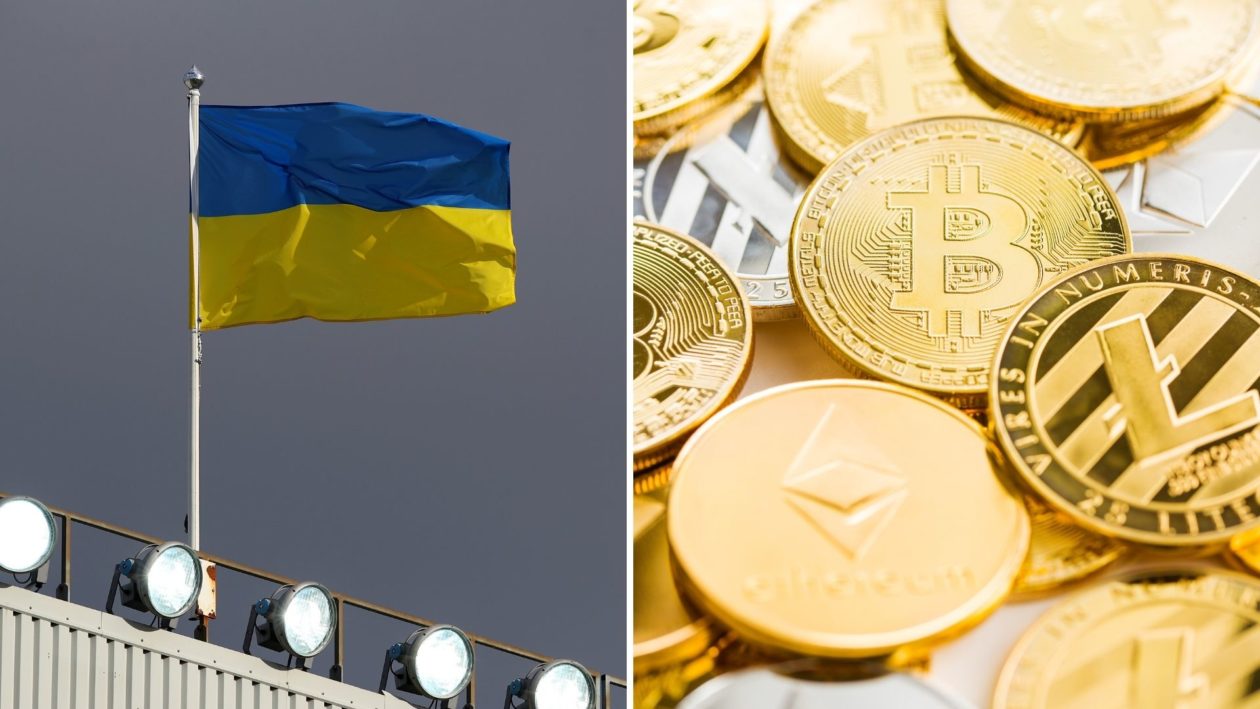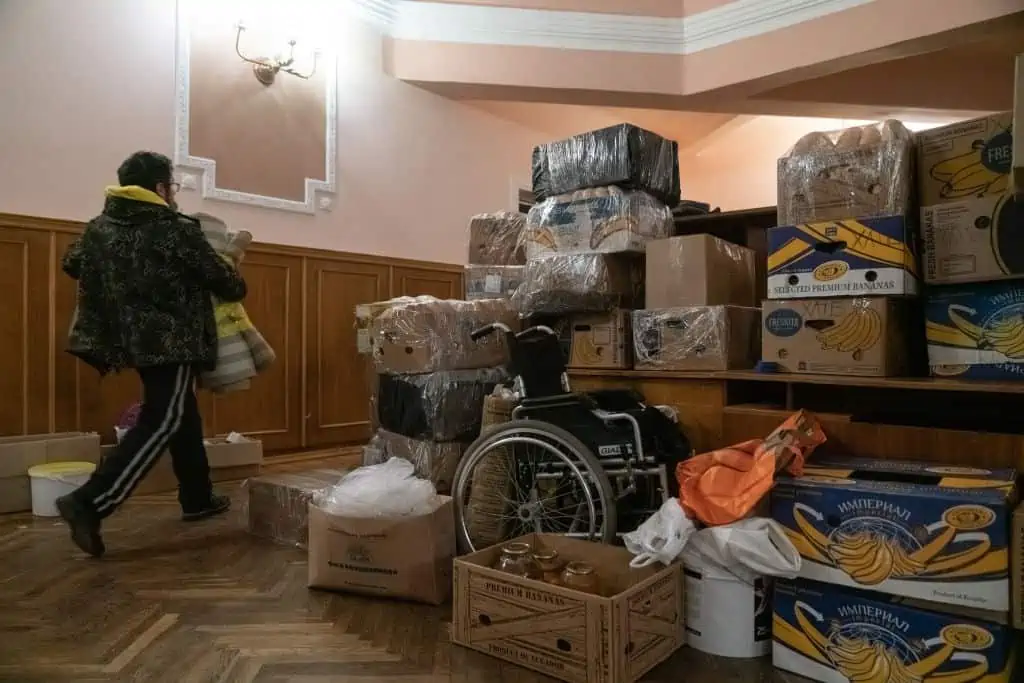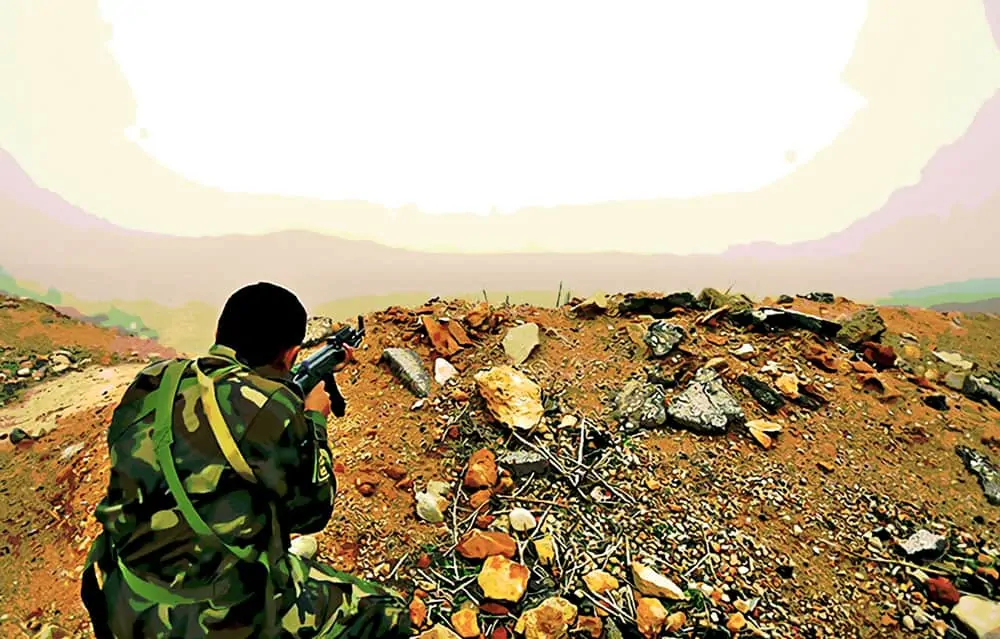The numbers are significant. A total of US$12.5 million in cryptocurrency donations reached the Syria-Turkey border in the weeks following the earthquake that devastated the region in February — to a cost of some 60,000 lives — according to a report by Blockchain analytics firm Elliptic.
These figures are even higher in Ukraine, where war continues to rage following the Russian invasion on Feb. 24, 2022. Analytics firm Crystal Blockchain estimates that Ukraine had received over US$225 million in crypto donations by the end of last month. That figure is roughly 20% of all the donations made to Ukraine in the 18 months since the start of the war.
“[The use of crypto] really is a game changer when it comes to the delivery of emergency aid, especially as we’re seeing more of a need for it as well, not just with Russia’s invasion of Ukraine, but with climate change and the increase in extreme weather events,” said Drew Simon, founder of Crypto Altruism, a platform that advocates for blockchain solutions in the non-profit sector.
“Folks are being forced into having to leave their homes because of that. There’s going to be an increased need for more efficient and transparent delivery of aid, and I think blockchain enables that,” he added.


Russia-Ukraine war
“Picture yourself in Ukraine while your family members are living overseas,” said Bohdan Opryshko, chief operating officer at Everstake, a Kyiv-based crypto staking firm. “They want to send you money, but the banking system is not operational.”
The direct and immediate nature of blockchain transactions allows users to bypass the structural and administrative difficulties faced by the war-time state and its institutions, explained Bohdan.
In that context, crypto “serves as a backup option where banks fail to deliver. Moreover, your knowledge of what is achievable and what is not can help fill gaps where the government falls short,” he said.
But it’s not just family members and other individuals who have been sending crypto to those in need in Ukraine. Institutions are also making use of blockchain’s possibilities.


In December 2022, the United Nations High Commission for Refugees (UNHCR) adopted a first-of-its-kind program to distribute cash assistance to a small group of Ukrainian refugees in the form of USDC — the world’s second largest stablecoin.
The UNHCR partnered with the Stellar Development Foundation — specialists in crypto-to-fiat transfers — and MoneyGram International — a worldwide financial services provider with over 4,000 locations in Ukraine and almost 350,000 globally — to provide a broad and easily accessible range of withdrawal options for aid recipients.
“Beneficiaries were able to activate the digital wallets within minutes and access their cash through the cash out network,” said Carmen Hett, corporate treasurer at the UNHCR. “The only prerequisites for beneficiaries who met the cash assistance criteria were digital literacy and possession of a smartphone,” she added.
Hett confirmed that, after the successful completion of the pilot program in April, the UNHCR decided to continue with a “small scale up” of the operation.
We just won ‘Best Impact Project Award’ at #PBW2023 for a pilot project using blockchain technology to disburse cash to people displaced by the war in Ukraine. Gradual scale-up is planned, considering context and focusing on the people we serve. More: https://t.co/JCTvWxo5Wm
— UNHCR, the UN Refugee Agency (@Refugees) March 23, 2023
Advantages
Hett and the program’s other organizers, which include USDC’s Boston-based issuers Circle, found that the speed and scalability of the stablecoin made it well suited for delivering aid in high volumes and in a very short period of time.
“It’s really an amazing use of USDC,” said Corey Then, Circle’s vice president of global policy during an interview in May. “Folks who might be sitting in a basement while bombs are going off outside can receive money on this as long as they have an internet connection.”
He highlighted the difficulties faced by organizations making humanitarian cash transfers in previous conflicts.
“Some of that went to the right places, much of it didn’t, so it’s a huge inherent advantage with USDC and the blockchain,” he said. “From the UN’s perspective, not only can they get aid in faster, but they can actually track where it’s going. So this stands in stark contrast to some forms of aid disbursement.”


Pegged to the US dollar, USDC also ringfences the beneficiary from local currency volatility — the central bank in Kyiv devalued the Ukrainian hryvnia by over 25% against the US dollar in July 2022, five months into the war with Russia — while the immediacy of each transfer cuts out the need for a middleman, reducing transaction fees.
That makes the use of stablecoins to deliver humanitarian aid “highly auditable, being on an immutable blockchain,” said Crypto Altruism’s Drew Simon.
“You can see exactly where the funds are going,” he added.
Ukrainian suitability
When compared with many other places around the world — particularly low-infrastructure areas in the global south — Ukraine is well placed to carry out a pilot project involving stablecoins.
Even before the war, the country boasted a disproportionately large number of crypto users, retail investors and tech professionals.
While I cannot claim that cryptocurrency is an integral part of Ukrainian culture, it is undeniable that Ukrainians have a deep-rooted affinity for change and technological progress
Bohdan Opryshko, chief operating officer at Everstake
“While I cannot claim that cryptocurrency is an integral part of Ukrainian culture, it is undeniable that Ukrainians have a deep-rooted affinity for change and technological progress,” says Everstake’s Opryshko.
He highlighted Ukraine’s scarce investment opportunities and distrust of the national banking system as reasons that an estimated 15.72% of Ukrainians own cryptocurrency.
“There are limited options to preserve money and generate passive income. We don’t have a national stock market, and banks can face bankruptcy, leading Ukrainians to trust cryptocurrency wallets more,” Opryshko said.
The “not your keys, not your coins” philosophy popularized in the crypto world to avoid scams also, he said, strikes many Ukrainians as “a safer approach than keeping money under the pillow or in a bank.”
Despite the shortcomings in Ukraine’s traditional banking and other administrative systems that, in many cases, predated the war with Russia, receptivity to technology — including the blockchain — extends to the national government.
On Feb. 26, 2022, the Ukrainian government’s official Twitter page posted Bitcoin and Ethereum addresses for donations to the war effort as part of its “Aid for Ukraine” initiative.
According to a February report from Elliptic, by the end of 2022, the initiative had raised over US$29 million in Ethereum, US$22.7 million in Bitcoin, US$15.1 million in USDT and US$8.2 million in DOT, the native coin of the Polkadot blockchain.
Stand with the people of Ukraine. Now accepting cryptocurrency donations. Bitcoin, Ethereum and USDT.
BTC – 357a3So9CbsNfBBgFYACGvxxS6tMaDoa1P
ETH and USDT (ERC-20) – 0x165CD37b4C644C2921454429E7F9358d18A45e14
— Ukraine / Україна (@Ukraine) February 26, 2022
Beyond Ukraine
While Ukraine may provide a receptive testing ground for blockchain-based humanitarian aid in times of war, Crypto Altruism’s Drew Simon highlighted its use across a variety of different crisis situations.
He pointed to the millions of dollars in crypto donations that poured into Syria and Turkey in the wake of February’s earthquake, including via a number of different NFT projects that helped Turkish and Syrian artists sell their work to raise funds for impacted areas. Those efforts combined with large crypto donation platforms like the Giving Block Endowment to solicit donations for specific aid organizations on the ground in the region.
“We definitely saw an outpouring of support, maybe not to that same level as in Ukraine, but there were definitely a number of NFT projects, philanthropic campaigns in the Web3 space,” Simon said.
Elsewhere in the Middle East, he continued, innovative use of blockchain technologies have emerged in various forms — including the World Food Programme’s Building Blocks project. The project — which began in 2017 — uses blockchain technology to securely transfer funds to displaced communities in a number of locations, including a settlement for Syrian refugees in Lebanon in September 2020.


“Refugees had funds deposited into their wallet on a blockchain, they went to the grocery store, their iris was scanned and then it automatically pulled up their wallet so they could purchase groceries,” Simon said.
The system was beneficial, he said, as individual recipients could avoid vouchers, cash and other physical payment methods that are harder to retain and keep track of in the challenging environment of a refugee settlement.
“I know there’s a lot of questions around the ethics around biometrics and I think that’s a whole different conversation, but there’s these really cool opportunities that make it a lot easier for folks that previously lacked access to traditional financial tooling,” Simon added.
Potential pitfalls
Regardless of ease of use, such programs require beneficiaries to give up information that, in less strained circumstances, they may think twice about sharing. That involves a degree of trust in not only the technology but also the benevolence of program organizers. If missing, that lack of trust can prove a high hurdle to overcome.
The UNHCR’s Carmen Hett conceded as much when discussing the USDC pilot program in Ukraine, saying that “a lack of knowledge and distrust of the technology” among a small number of potential beneficiaries had prevented their participation.
To avoid that scenario in future, she said, further investment in digital literacy is “crucial” for helping vulnerable communities in crisis situations adapt to the funding avenues opened up by blockchain technology.
We’re just used to [the internet]. It’s a part of everyday life, and I think that that’s what we need to get to with Web3 as well, where the user interface and experience is so seamless and easy
Drew Simon, Crypto Altruism
For Crypto Altruism’s Drew Simon, that process can be simplified even further by removing the jargon that dominates the crypto industry, clouding understanding for newcomers.
“Sure, it’s a revolutionary technology, but so is the internet and we don’t talk about whether a website is hosted on WordPress or Squarespace, what coding language is used to write an app, or how our email gets from point A to point B. It just does it, right?” Simon said.
“We’re just used to [the internet]. It’s a part of everyday life, and I think that that’s what we need to get to with Web3 as well, where the user interface and experience is so seamless and easy,” he added.
Real-world use
Once those trust and understanding hurdles are overcome, the potential benefits could prove significant, with real world consequences for those in need.
Everstake’s COO Bohdan Opryshko illustrated that point via a story from the early days of the Russian invasion, when an elderly priest living in a village in Ukraine contacted his firm by email.


Most of the working-age villagers had left to fight in the war, the priest explained, so he was collecting donations to help support those who were left behind. But his efforts were frustrated by the difficulty in sending and receiving large sums in both Ukrainian hryvnia and other international currencies.
“So, we suggested sending the funds in cryptocurrency. A few hours later, he contacted us again, having figured everything out, and created a wallet on Binance linked to his card,” Opryshko said.
The elderly priest had “defended his village” through the use of crypto, Opryshko added — not the worst use case for blockchain technology.
- SEO Powered Content & PR Distribution. Get Amplified Today.
- PlatoData.Network Vertical Generative Ai. Empower Yourself. Access Here.
- PlatoAiStream. Web3 Intelligence. Knowledge Amplified. Access Here.
- PlatoESG. Automotive / EVs, Carbon, CleanTech, Energy, Environment, Solar, Waste Management. Access Here.
- BlockOffsets. Modernizing Environmental Offset Ownership. Access Here.
- Source: https://forkast.news/blockchain-can-it-reshape-international-aid/



